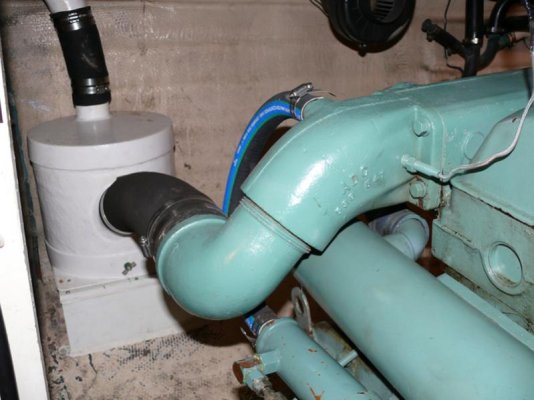Underloaded engine
Most of this discussion has been about why loading increases wear, but there hasn't been a lot of discussion on why you should push the engine a bit.
Diesel engine exhaust temperature is a function of load. In a lightly loaded engine, the exhaust temperatures are low and you run the risk of wet stacking, which is where you get incomplete combustion. This can cause carbon to build up on the injectors and valves, which can cause even less efficient fuel burn, leading to more unburnt fuel.
Here's some data from my boat. This is for the new John Deere engine which replaced the 5000 hour Lehman 120. For reasons no one has yet to explain, three center cylinders were scored. However, I don't think the PO ever pushed the boat above 1650 RPM, until I sea trialed it.
The temperature data below is post-turbo, so the EGT is probably 400-500 degrees hotter at the turbo inlet.
Note that at 1800 RPM, my 34' trawler is just above displacement speed.
RPM LOAD EGT
1600 29% 274
1800 34% 425
2000 45% 510
2100 50% 534
2200 60% 568
2640 99% 680 WOT
Now that the engine is broken in, I'll cruise between 1700 and 1800 rpm. I also run the engine at 2100 to 2200 for at least 10% of every trip.
Marin, given a slightly larger boat with twins, I would guess your engines are probably operating at 25% load. Have you had any problems with injectors sooting up?



